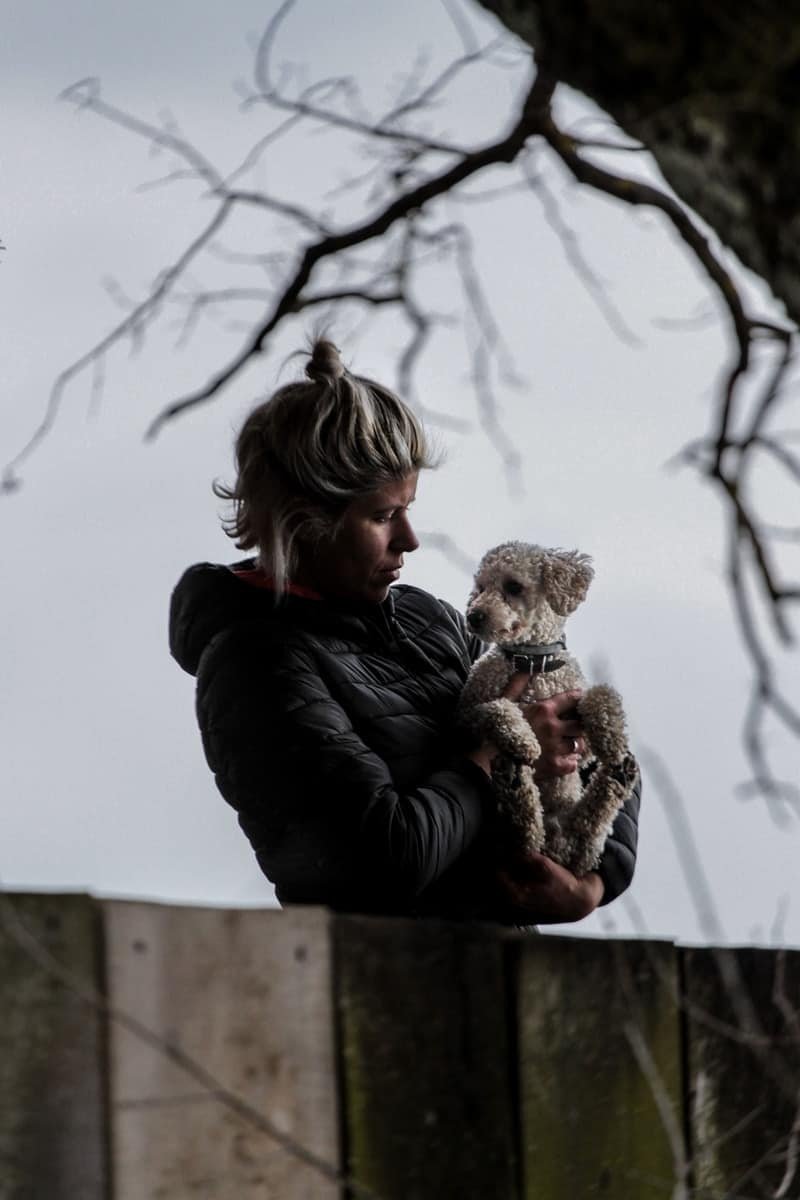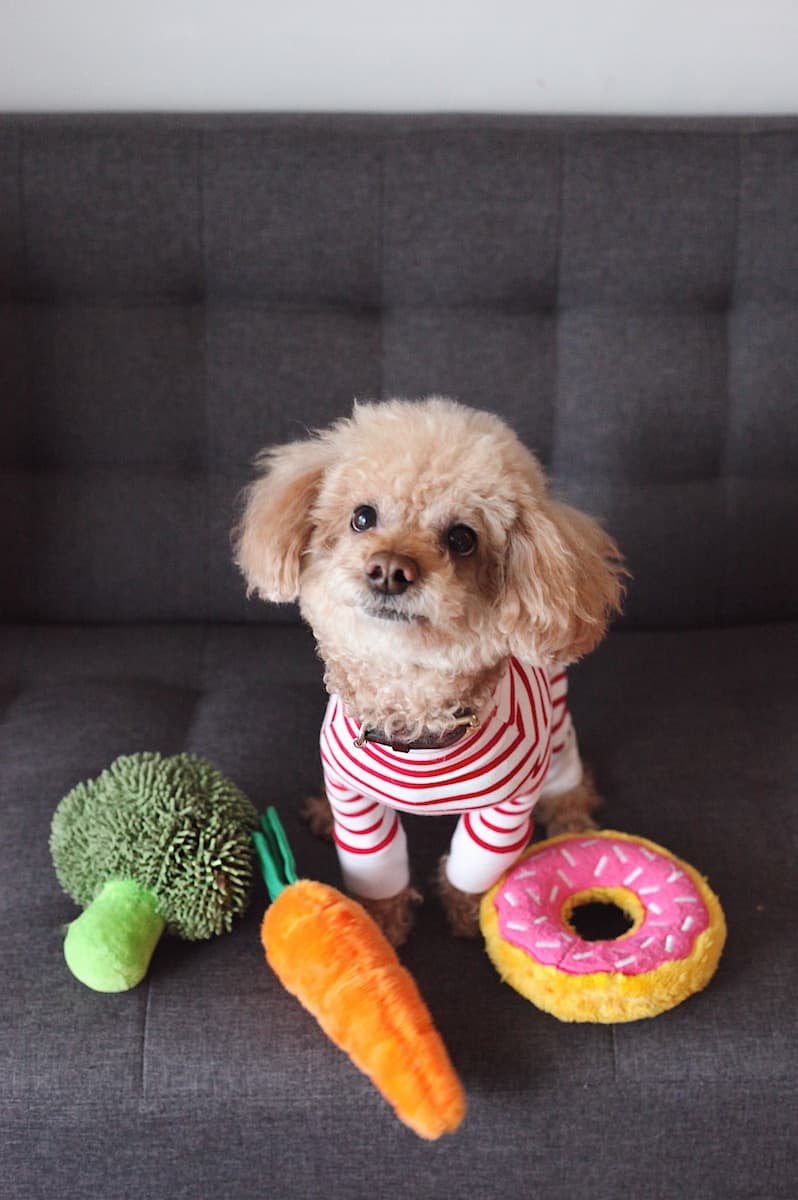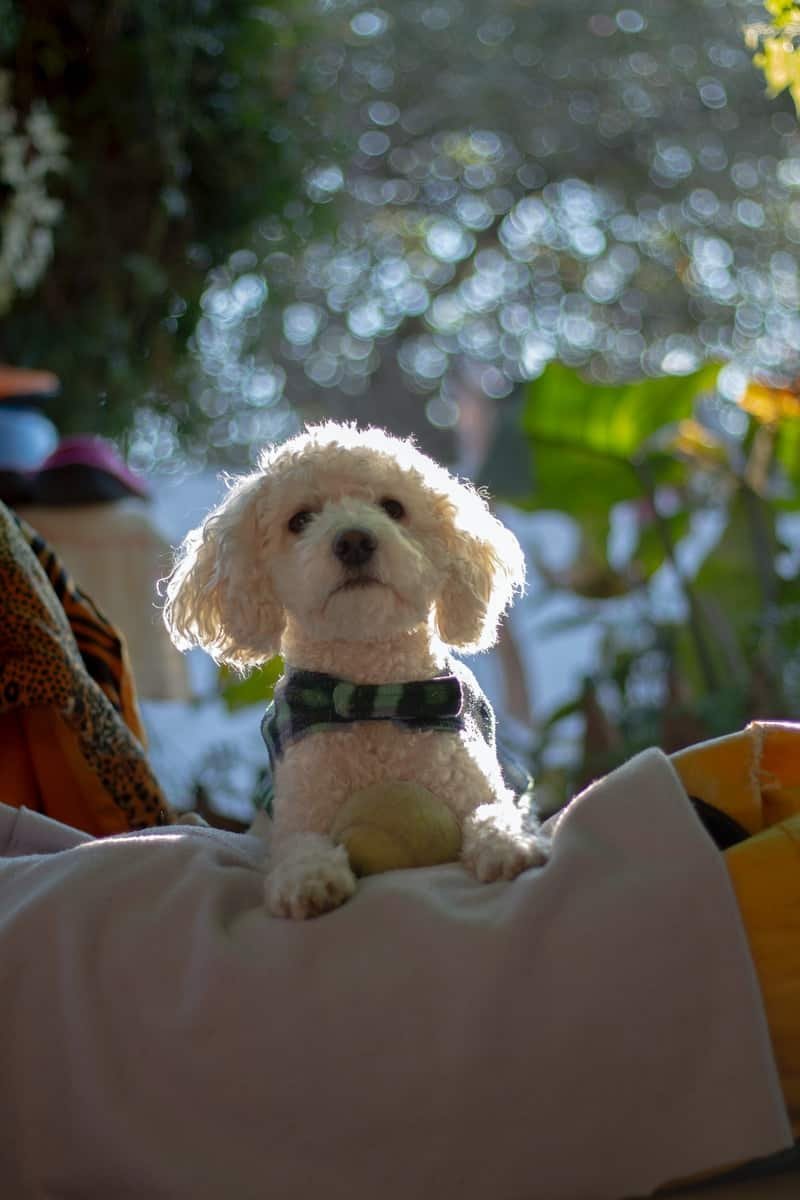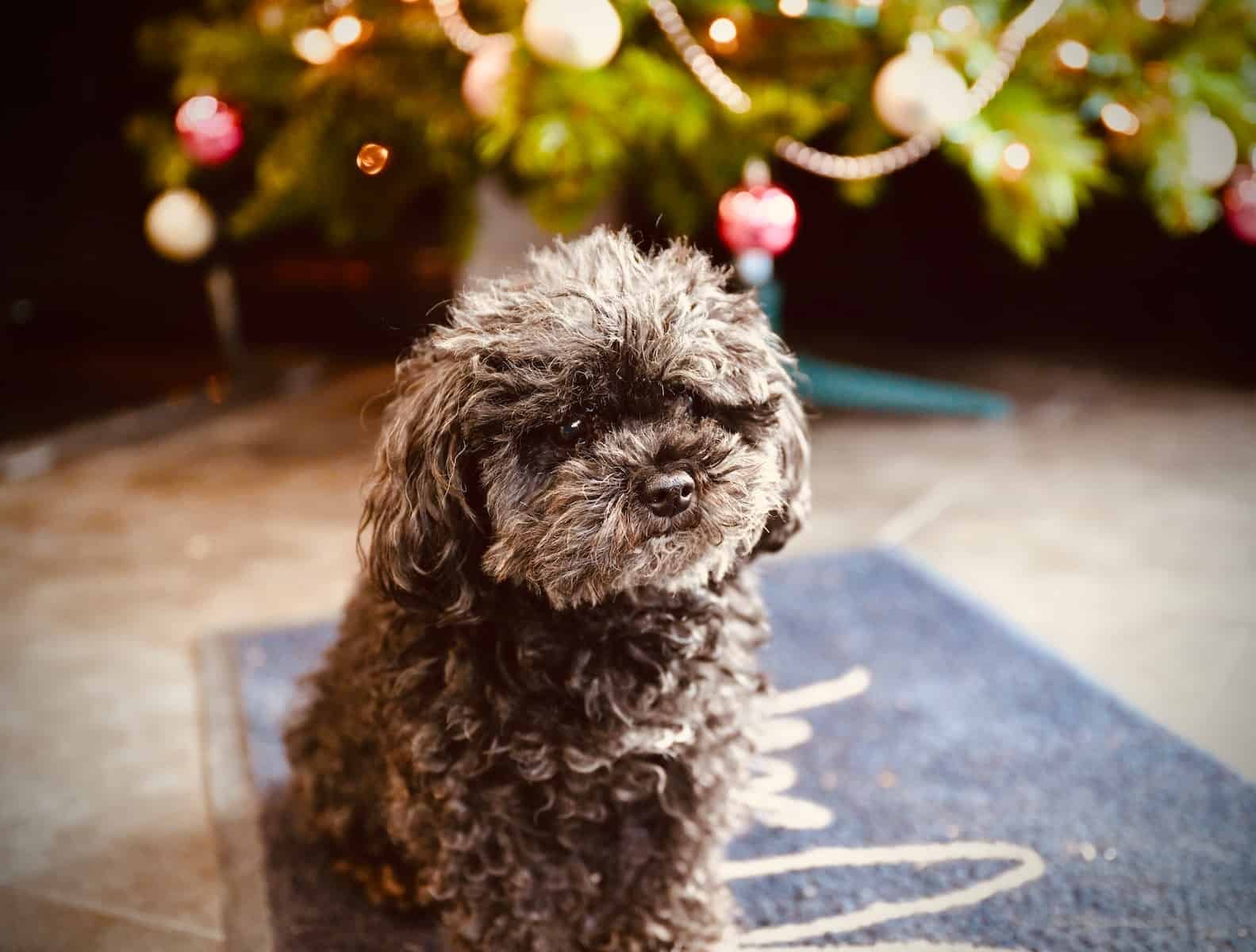The Poodle is miscategorized as being pampered, insanely cute, and dressed up for glam and show. If you own a Poodle or researched about the breed, then you’ll know that this is such a wrong stereotype!
Poodles have such an exciting history that dates to millennia.
The Origin of the Poodle
Poodles were shown in artifacts from early Rome and Egypt, helping their owners in various jobs. However, some have speculated that Poodles were descendants of early Asian herd dogs. Then, they traveled together with the Goth and Ostrogoth tribes to Germany.
Others have said that Poodles came from the Asian Steppes in the 8th century, founding their way to Portugal with Moors. However, the most accurate information is that they came from Germany.
Poodles are widely associated in France but have originated in Germany, developed to work as a water retriever. It has worked different jobs throughout the decades, such as hunting for truffles, acting as service dogs, and even performing in circuses.
The Federation Cynologique Internationale (FCI), an international organization offering membership to all major kennel clubs among France and Germany, said that Poodles came from the now-non-existent French Barbet. It officially recognized the Poodle breed to prevent disputes between the organization’s founding members. After the announcement, Germany recognized Poodles as a breed from France, though it may have crossed with the Hungarian Puli.
But the British Kennel Club stated the Poodles originated in Germany, with the American Kennel Club and Canadian Kennel Club supporting the statement. Despite the wide association of the breed in France, Poodles originated in Germany, working as duck hunters.
In fact, the American Heritage Dictionary and Oxford English Dictionary traced the word’s etymology, ‘Poodle.’ It might have come from the German word ‘Pudel,’ meaning to splash water. It also connects with the English word, ‘puddle.’
The French word for Poodle is ‘caniche,’ which is short for ‘Chien de canard,’ meaning ‘duck dog.’ Even in the Poodle’s name, you can see they are associated and developed to be in the water. That’s why Poodles have such a wonderful swimming ability.
Poodle Breed History
There were different types of Poodles found across Europe back in the 15th century. Drawings and paintings of Poodles were done by renowned artists Rembrandt and Albrecht Durer in the 15th to 16th century. Based on the paintings, it was assumed that the dog breed was pets of the wealthy class and royalties back then, which is why they are called the national dog of France.
During the 18th century, in Spain, Poodles were principal pet dogs, with evidence shown in a painting of Francisco Goya.
During Louis XVI’s reign, Toy Poodles were found in France, with definite proof of Poodles present in Versailles even before Goya. In fact, Louis XVI’s records show that his grandfather owned a Poodle named Filou. Evidence has also shown that Sun King owned Poodles, too.
Miniature Poodles also came to be in the 18th century, becoming companions in French royal houses.
By the 19th century, Poodles started working less as hunters and more as circus performance. They were still considered the status symbol of the wealthy, a reason why the breed was found only as circus dogs or pets of the rich.
In the 20th century, the United States began breeding Toy Poodles, as they make excellent companions for those living in the city. During this time, breeders began crossbreeding poodles with other purebred dogs to create a ‘designer dog.’ They aimed to create a dog with the Poodle’s intelligence and minimal-shedding coat with the look of the other purebred breed.
Unfortunately, breeders deplored the Poodle mix trend, diluting carefully managed bloodlines.
What Were Poodles Bred For?
Dog breeding aimed to create dogs excellent at a specific set of skills or had particular temperaments. This is known as a purpose-bred dog, with a breeder looking out for specific physical and characteristics behaviors. All dog breeds we know now have been most likely bred with a particular job or role.
This particular breed is known as one of the most intelligent dog breeds, having many roles.
Water Retrievers
The Poodle’s primary role was to work as a water retriever, also called a ‘gun dog.’ Until now, Poodles continue working as water retrievers!
People originally bred Poodles to be water retrievers, owning all the necessities that create an excellent one. When a hunter shoots down waterfowl (like ducks or other birds), Poodles are trained to bring them back from the body of water, so he doesn’t need to use a boat.
Poodles performed this job excellently for decades with their water-resistant coat, water agility, fantastic sense of smell, and intelligence. Besides cold water retrieval, they also worked to herd, manage, and protect other animals on the farm.
Before, Poodles had a specific type of clip made for performance enhancements to hunt efficiently. The traditional Poodle clip we know and love now wasn’t meant for fancy displays but to help them swim in the cold while protecting their joints and vital organs. Specific parts of their bodily regions were shaved to improve mobility and prevent it from getting tangled in bushes or weeds.
Circus
The most exciting job Poodles have done would be performing in the circus. Until now, this dog breed continues to be an excellent performer!
Since waterfowl hunting declined by the end of the 19th century, there were fewer Poodles bred for water retrieval. Instead, they frequently performed in Circuses across Europe and became a more popular breed.
Poodles are highly intelligent dog breeds in terms of work intelligence and obedience; they learn tricks and commands quickly. You can even teach Poodles the most complex and amusing tricks, and they will understand it quickly!
War Dogs
Poodles used to work as war dogs as well! During World War II in 1942, the US Army studied different popular breeds to work as war dogs, with the Standard Poodle being one of them. The Army admired the Poodle’s fantastic ability to learn commands efficiently, though their fast-growing coat was a significant drawback.
In 1944, the US Army further narrowed their list to 5 breeds without the Poodle. However, this agile breed still served in the Army as guard dogs. They helped protect military installations, defense plants, and even the coastline.
Service Dogs
With their intelligence, hardworking attitude, and instinct for assistance work, it’s not a surprise Poodles make fantastic service dogs. They are also very sensitive and in tune with the emotions of their owner.
You can find Poodles working as therapy dogs and emotional support animals. They quickly learn commands to help their owners perform tasks and sense when something is wrong with their owners, finding ways to alleviate the problem.
Who are Poodles Best for Today?
Poodles have unique characteristics, showing friendliness and loyalty no matter their size. The Poodle’s exceptional learning ability makes it easy for you to train them, learning a wide range of tricks and commands. You can even train this active dog breed to perform tasks and duties to help around the house!
Poodles make lovely pets to any type of owner and family. They are cautious, empathetic, and relatively easy to care for. However, note that they require regular coat grooming, obedience training, and lots of attention to prevent separation anxiety.
With all that in mind, the Poodle makes a wonderful family pet. As long as you have an active person at home to give the dog daily exercise and training, you will enjoy the love and companionship a Poodle offers.
The Different Sizes of Poodles
While many dog breeds are specially bred for different sizes, there are three types of Poodles based on their size varieties. While there are many Poodle mix variations today, these three major Poodle types stayed consistent throughout the century.
Standard Poodle
The Standard Poodle was the first type developed, known as the Caniche, Gross Pudel, Chien Canne, Barbone, and French Poodle.
It is a medium to large-sized breed that’s 15 inches tall, weighing between 45-70 pounds on average. Males weigh between 45-70 pounds, while females average between 45-60 pounds.
Miniature Poodle
Also known as the Mini Poodle, it stands at 10-15 inches tall, weighing between 15-17 pounds.
Toy Poodle
As the name suggests, Toy Poodles are small dogs bred in England back in the 18th century. They were used to serve the nobility and the merchant class as hand warmers, tucked in coats of the wealthy. It was such a widespread practice that this Poodle breed was known as sleeve dogs!
Toy Poodles may have also been used as truffle hunters, as miniature and toy poodles wouldn’t damage delicate fungi as much. However, breeders mainly bred mini and toy poodles for pet owners and companionship.
The Toy Poodle stands at 10 inches tall (or less!), weighing between 6-9 pounds. It is the smallest among all Poodle breeds recognized by the American Kennel Club. However, breeders are working on an even smaller Poodle breed known as the Teacup Poodle, which is 9 inches tall and weighs only 6 pounds!
All of the three Poodle breeds have a similar breed standard. They all have curly, dense hair, having solid colors. Poodles come in various shades: blue, silver, gray, brown, apricot, cream, and café-au-lait.
Poodle Lifespan
The overall Poodle lifespan ranges between 10-15 years, as long as they are cared for well, regardless of their size. A Standard Poodle will live for about 12 years, a Miniature Poodle for almost 14 years, and Toy Poodles can live for 16 years.
For Poodles to live a long and fruitful life, you will need to provide them a good home environment with regular exercise and training, coat grooming, and lots of love.
Unfortunately, they do come across risks of health conditions associated with their breed. It’s essential to take note of these health conditions for early prevention and treatment if detected.
Joint health
There are times that your Poodle’s kneecap slips out of place, which is known as patellar luxation. You’ll notice this happens when he runs and would pick up a back leg, skipping or hopping for a few seconds. Afterward, he’ll kick his leg out sideways, popping his kneecap back in place.
The Poodle may also experience stiffness on his hips and elbow, which becomes a considerable discomfort as he matures.
There are also other joint problems your Poodle may come across with. Both of their hips and elbows have the risk of contracting dysplasia. This is an inherited disease causing their joints to develop improperly, resulting in arthritis.
Legg-Calve-Perthes Disease is another severe joint issue Poodles may have, which is a painful degenerative hip condition.
The best way to prevent these joint problems is to help them maintain a healthy weight and incorporate anti-inflammatory foods into their diet. Regular exercise and routine veterinary appointments are vital to keep their joints moving and checked for any issues to treat immediately.
Hind legs
Poodles are known to walk on their hind legs, a fun trick their owners taught them. However, this is NOT a healthy trick or action to do for the long run. Poodles shouldn’t spend long periods on their hind legs since it may cause back problems and muscle strain.
Dogs don’t naturally walk on their hind legs, and it can also cause them to lose balance, muscle coordination, and even paralysis.
Other health issues
There are other common Poodle health issues to be wary of, such as:
- Epilepsy
- Progressive retinal atrophy
- Addison’s disease
- Thyroid issues
- Bloat
- Hypoglycemia in the Poodle puppy
- Sebaceous adenitis in the Miniature and Toy Poodle, a skin condition caused by inflammation
Poodles make great pets and are loyal to their owners and families. They’re cautious, empathetic, relatively easy to care for, but they will need grooming regularly. They’re smarter than the average dog and may learn a wide range of different tricks, in addition to tasks to aid people with all sorts of needs. You’ll find out more about it wonderful breed on-line, and there are numerous different breeders if you wish to own one.






